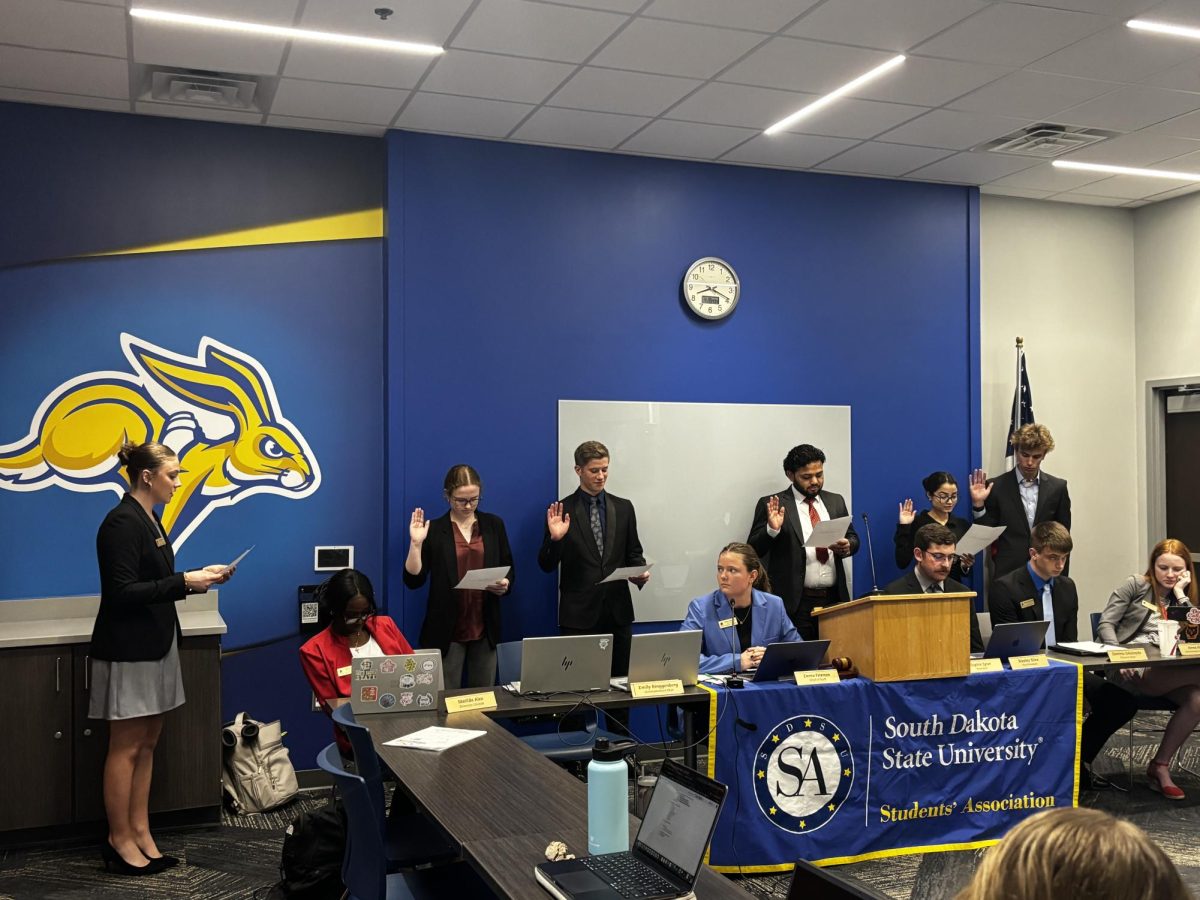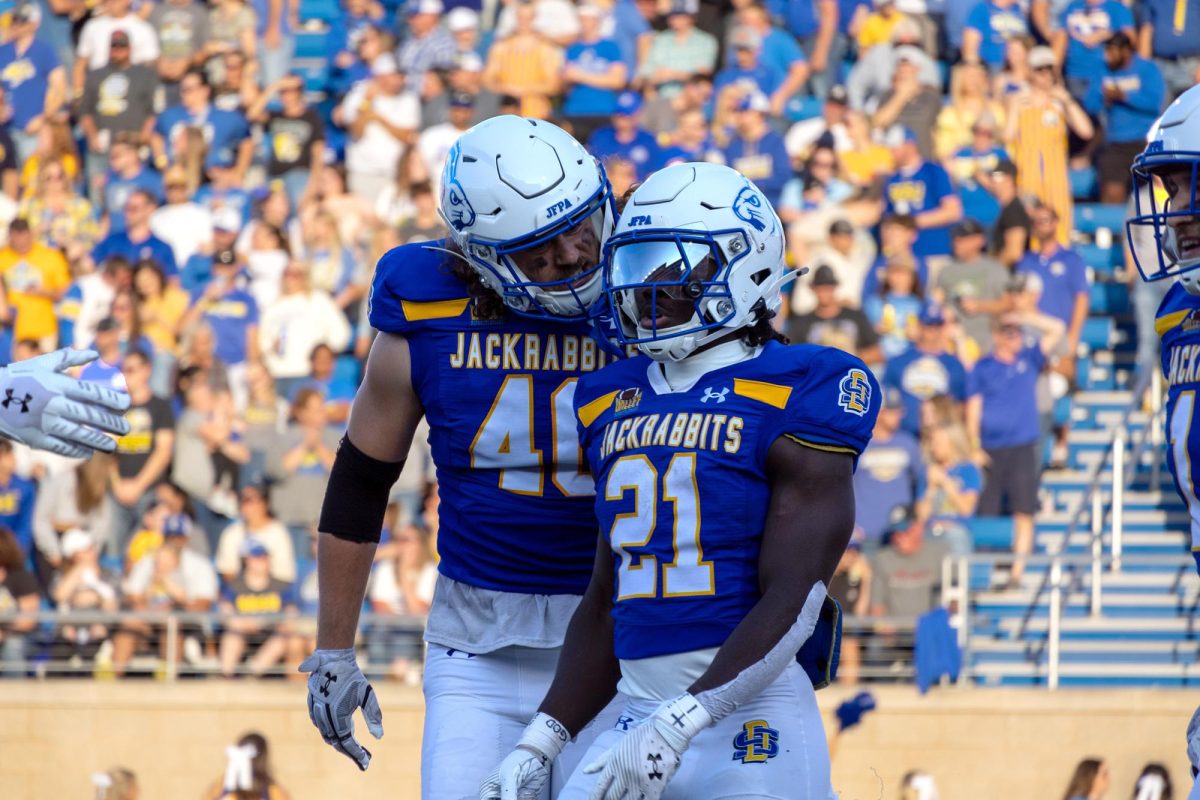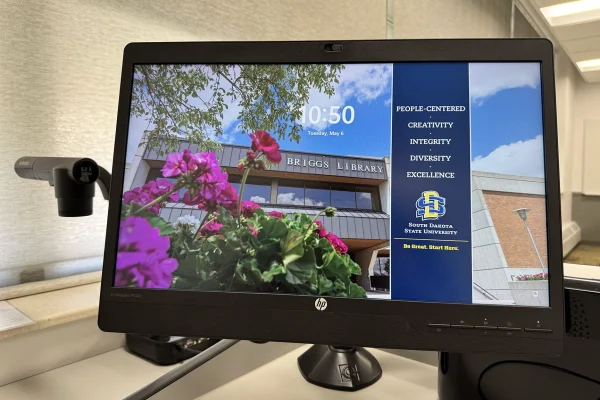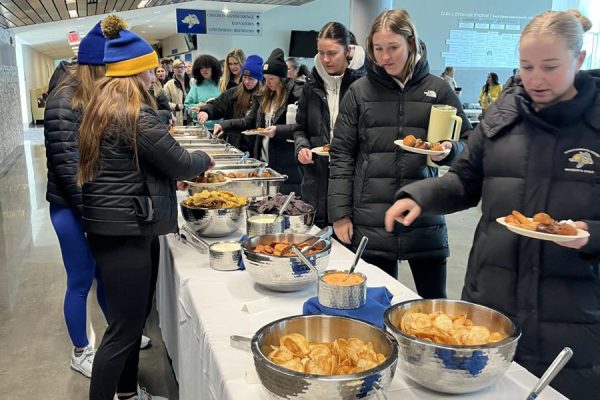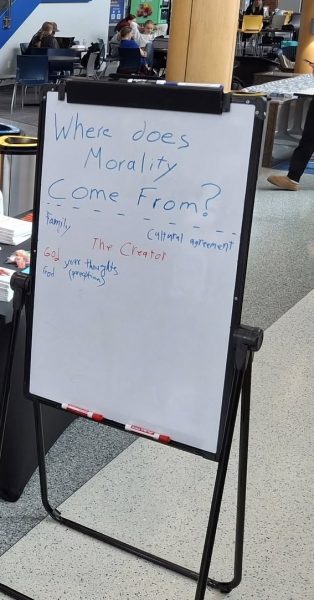History in the making
October 21, 2015
Large numbers of students and alumni alike get jacked up about Hobo Day every year. Many know what Hobo Day is but do they know why a school whose mascot is a Jackrabbit celebrates hobos for its homecoming?
Hobo Day began in 1912 after a student by the name of R. Adams Dutcher saw the idea of Hobo Day in practice at the University of Missouri according to Grand Pooba Paul Dybedahl. During the celebration of Hobo Day, students would dress up as hobos and meet the opposing team for the train station the Friday night before the game. The idea didn’t last long because actual hobos showed up more than students, according to Dybedahl.
Dybedahl said students celebrated homecoming before the first Hobo Day. Starting in the early 1900s students would have a nightshirt parade. They would wear nightshirts to meet the opposing team at the train station and lead them back to campus. Members of the faculty at that time thought it was too scandalous for females to be wearing their nightshirts around town. Hobo Day was born in 1912.
Another part of Hobo Day’s rich history was donated in 1938. According to Nick Wendell, director of student engagement, the Bummobile was donated that year. Frank Weigel, a farmer and SDSU supporter from Flandreau, S.D., donated the 1912 Ford Model T.
“It [the Bummobile] has been in every Hobo Day parade since it was donated, whether it was pushed, pulled or driven,” Dybedahl said.
According to Dybedahl, presidential candidate Dwight Eisenhower paid Hobo Day a visit in 1952 while on his campaign trail. Eisenhower rode in the Bummobile during the Hobo Day parade. After being elected president in 1953, Eisenhower served eight years in the Oval Office.
Also during the 1950s, the well-known Weary Wil came to life. Dybedahl said Weary Wil was originally depicted in a mural painted by a student in the Pugsley Student Union, which was the Student Union at the time. After the mural was painted, it was decided that Weary Wil should be brought to life as a character. About 20 years later, he was accompanied by a female counterpart named Dirty Lil. Every year Wil and Lil are portrayed by different alumni chosen by the Hobo Day Committee. The individuals selected to be Weary Wil and Dirty Lil ride in the Bummobile during the parade and their identities are revealed at halftime of the Hobo Day football game.
A riot accompanied the 1990 Hobo Day celebration. After the riot, administrators threatened to cancel Hobo Day. Hobo Day has been cancelled twice, first during World War I and then again during World War II.
Along with the deep history of Hobo Day comes many traditions, one of which stems from the period of time before Hobo Day was called Hobo Day. According to Dybedahl, during the nightshirt parade era and the early years of Hobo Day, the students would collect canned goods from houses throughout the Brookings community that had their porch lights illuminated. Upon arrival at their destination on campus all of the canned food items would be compiled into a stew that the students called Hobo Stew. A similar event, the Bum-a-Meal still happens in the present time in which pre-registered students dress up in hobo attire and bum a free, hot meal from residence of the Brookings community.
Other traditions include Hobo Day buttons, the One Month Club, Bum Over and Hobo songs. Many of these traditions, like the buttons and the One Month Club, have been around for many years.
The One Month Club asks male students to grow out their beards for exactly one month leading up to Hobo Day and used to include a women’s category where women would grow pigtails and the pigtails could be styled in different ways. Weary Wil and Dirty Lil will judge the men’s beards before the Cavorts talent show based on four different categories including fullest, best try, longest and patchiest. This year’s Hobo Day Committee is bringing back the women’s category, in the form of asking women to not shave their legs for one month. Women will be based on three categories of softest, longest and most colorful.
Bum Over is a newer tradition started in 2012. The event, held in The Union, is inspired by the Hoovervilles of the 1930s. During the event, students build cardboard shanties, similar to those built in the Hoovervilles, inside The Union and then the shanties will be judged. The winning shanty will be displayed in The Market on Friday.
Dybedahl stated there are also many Hobo songs. For example, he referenced a Hobo Day Committee song based on the tune of Yankee Doodle and a Dirty Lil chant. Dybedahl said, “Before the end of my time as Grand Pooba, I would like to make a song book of all the Hobo Songs.





